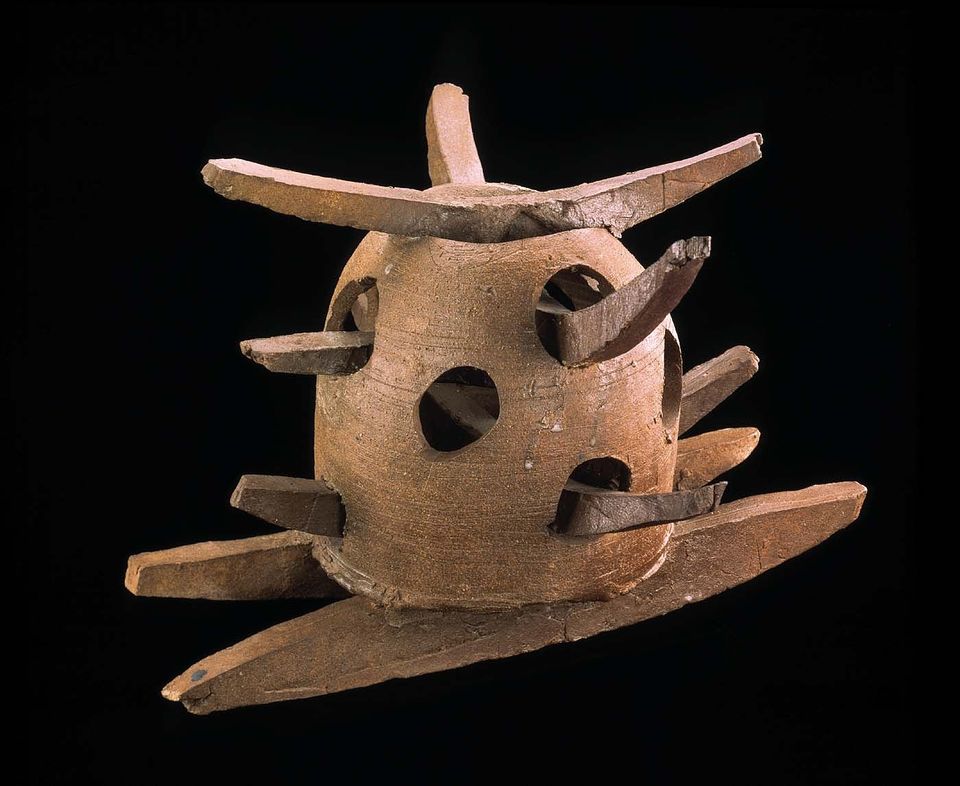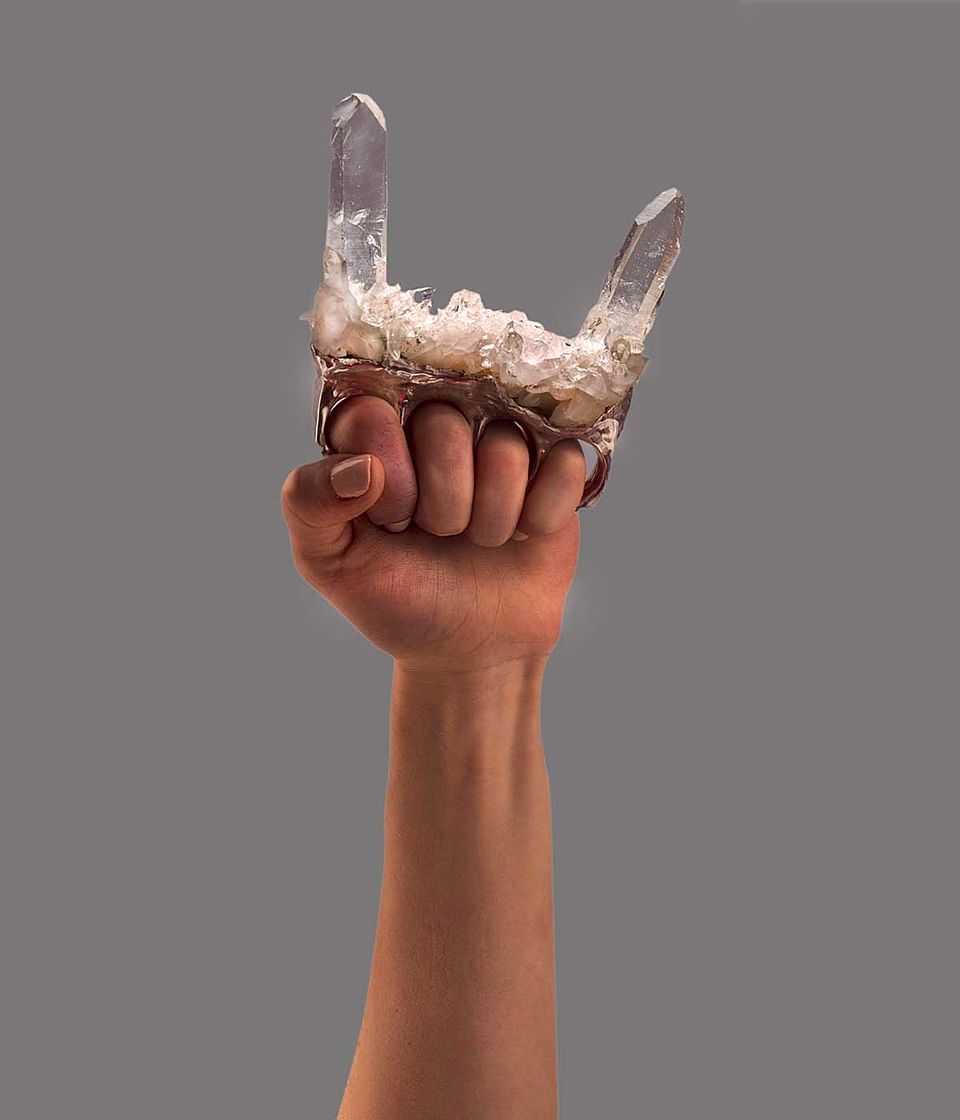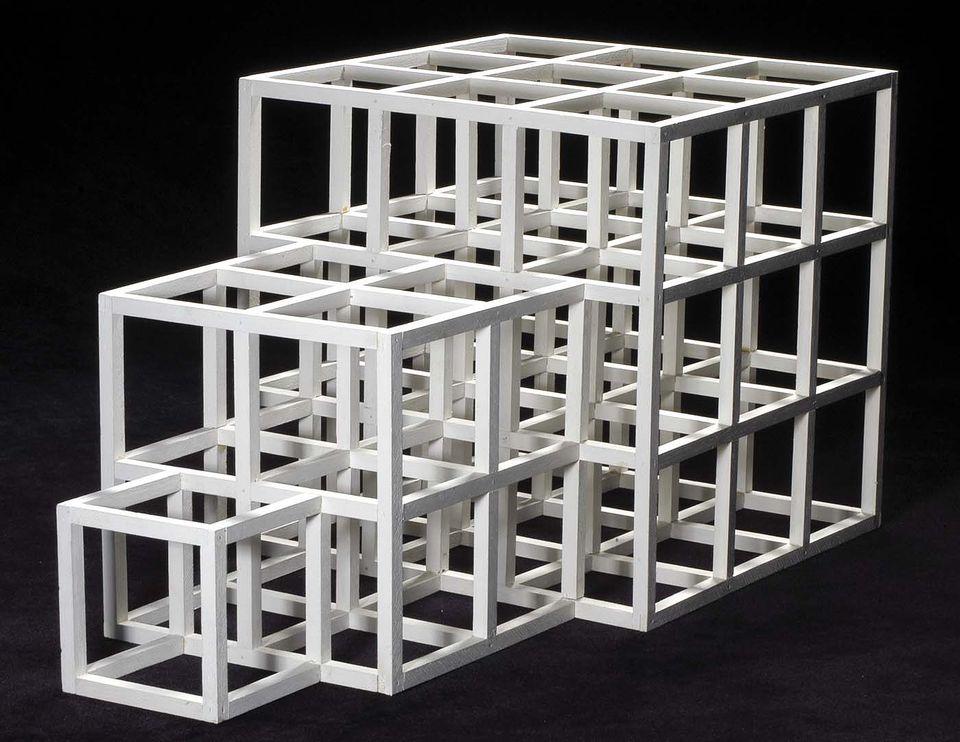Peter Voulkos

- Biography
After serving in the U.S. Army Air Force from 1943 to 1946, he entered Montana State College, earning a B.S. degree in 1951 and, the following year, an M.F.A. degree at California College of Arts and Crafts in Oakland. Returning to Montana in 1952, he established a pottery workshop in Helena. In 1953 while teaching a three-week summer course at Black Mountain College in North Carolina, Voulkos met innovative figures in the arts such as Josef Albers, Robert Rauschenberg, and John Cage, which significantly influenced the direction of his work.
In 1954 Voulkos became chairman of the new ceramics department at Otis Art Institute in Los Angeles. His pottery shop soon became the mecca for artists in the area, launching the Los Angeles clay movement, with Voulkos as its leader. Despite the accolades for his work, Voulkos began to feel constrained by the traditional forms of pottery. His Black Mountain connections led to his meeting Franz Kline and other abstract expressionist artists in New York. Absorbing their ideas, he sought to use clay as an expressive, sculptural medium and began to execute many works on a monumental scale.
In 1959 Voulkos became professor of design and sculpture at the University of California at Berkeley.
Kenneth R. Trapp and Howard Risatti Skilled Work: American Craft in the Renwick Gallery (Washington, D.C.: National Museum of American Art with the Smithsonian Institution Press, 1998)
- Artist Biography
In 1972, alter nearly a decade working primarily as a sculptor in metals, Peter Voulkos returned to ceramics. In the mid-1950s, he had virtually reinvented the field by introducing into clay, issues and techniques previously restricted to contemporary painting and sculpture. In the early 1970s Voulkos concentrated on two basic ceramic forms: three-tiered, sculptural "stack pots," and large, stoneware platters. He had first experimented with platelike forms in the late 1950s and early 1960s, slashing, gouging, pinching, tearing, and rearranging their common, archetypal shapes. Typically, he spontaneously brushed vivid slips, or epoxy paints onto their altered surfaces. By contrast, the new series of platters were very different.
During 1973–74, Voulkos produced a limited edition of two hundred decorated earthenware plates, specifically for a multiples project initiated by curator Lee Nordness. Although wheel-thrown by an assistant, the surfaces of these rather uniform discs were decorated by Voulkos himself. Often, he began by drawing two or three sharp lines across their still-soft faces with a knife. Then, with his thumbs, he pressed hard from the underside, producing eruptions ("pass-throughs") on the leather-hard face of the plate. He also often pushed right through the ceramic body, tearing out pieces of clay, and leaving ragged holes. Frequently, Voulkos plugged the smaller holes and pass-throughs with lumps, or balls of smooth, white porcelain to generate tonal and textural contrasts. But by leaving gaping perforations in the concave surface, the artist deliberately introduced light and space into the aesthetic equation.
By 1976, when Untitled [1993.54.21] was made, Voulkos' interest in the platter shape had increased markedly. He now threw the plates himself, often giving them a more sculptural character by varying the thickness of the rims. Voulkos viewed the circular format as a thick, three-dimensional plane on whose surface he could fuse his continuing interest in both abstract expressionist drawing and sculpture. The artist actually exhibited his circular forms as "plate drawings," and indeed, each manipulated surface suggests a landscape image, a different configuration, or plotting of space.
In contrast to his aggressively manipulated plate shapes of the late 1950s, the uniform disks of the 1970s reveal a more classical and reductive aesthetic. Each is a variation on a simple theme. Sgraffito markings and surface perforations are relatively restrained, and often kept to a minimum. Moreover, unlike his earlier series of slip-decorated plate forms, the later series is essentially monochromatic. Generally uncolored, the platters retain their natural, cream-to-brick, earthenware tonality. Surface incisions and pass-throughs, however, were lightly washed with oxide for shading purposes, and then the plates were sprayed with a thin, transparent glaze. Although fired in a gas kiln, their natural coloration gave them a traditional, Japanese wood-fired appearance. Voulkos continued to make plates, but after 1978, they became larger and more sculptural, with greater variegations in color and tone.
Jeremy Adamson KPMG Peat Marwick Collection of American Craft: A Gift to the Renwick Gallery (Washington, D.C.: Renwick Gallery, National Museum of American Art, Smithsonian Institution, 1994)
Luce Artist BiographyBorn in Montana to Greek parents, Peter Voulkos worked his way through high school and then hitchhiked to Portland, Oregon. There he worked as an apprentice in an iron foundry until he was drafted into the U.S. Army Air Force. After the war, Voulkos studied painting and printing on the GI Bill. He earned his M.F.A. in ceramics at the California College of Arts and Crafts and returned to Montana to work. On a trip to New York in 1953, the artist met abstract expressionist painters Willem de Kooning and Franz Kline. From this moment, Voulkos wanted his work to have the scale and power that their works had achieved. He pushed the limits of clay sculpture but turned to bronze so that he could create even larger works with forms that projected out into space. He found inspiration in Zen philosophy, Spanish guitar, the Egyptian pyramids, and in cocaine, which landed him in a rehabilitation center. Despite his run-ins with drugs and alcohol, Voulkos was widely respected in the postwar period for his expressive ceramic and cast metal sculptures.

















